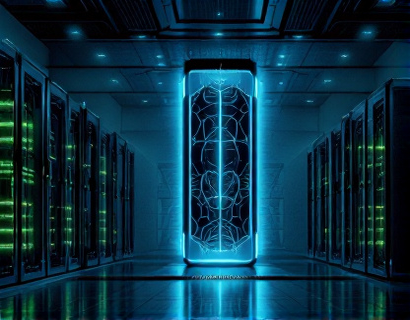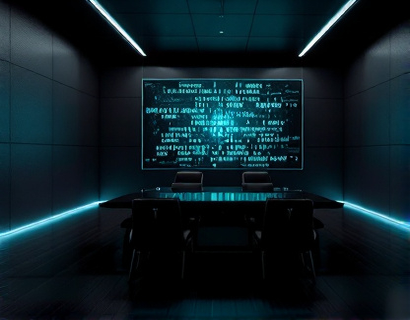Blockchain-Enabled Registry Software: Revolutionizing Data Management
In an era where data is the new currency, the importance of robust, secure, and efficient data management systems cannot be overstated. Traditional registry management systems often struggle with issues such as data integrity, security, and transparency. The advent of blockchain technology has introduced a transformative solution that addresses these challenges head-on. This article delves into the world of blockchain-enabled registry software, exploring how it is reshaping data management for professionals and enthusiasts alike.
Understanding Blockchain Technology
Before diving into the specifics of blockchain-enabled registry software, it's essential to grasp the fundamentals of blockchain technology. At its core, a blockchain is a decentralized digital ledger that records transactions across multiple computers in such a way that the registered transactions cannot be altered retroactively. This technology ensures that once data is recorded, it is immutable and transparent, providing a high level of trust and security.
Blockchain operates on a network of nodes, each maintaining a copy of the entire ledger. When a new transaction is initiated, it is broadcast to the network, where it is verified by nodes through complex cryptographic algorithms. Once verified, the transaction is grouped with other transactions in a block, which is then added to the chain in a linear, chronological order. Each block contains a cryptographic hash of the previous block, creating an unbreakable link and ensuring the integrity of the entire chain.
Enhanced Security through Blockchain
One of the most significant advantages of blockchain-enabled registry software is its enhanced security features. Traditional registry systems are often centralized, making them vulnerable to cyber attacks, data breaches, and unauthorized access. In contrast, blockchain's decentralized nature distributes data across a network of nodes, eliminating a single point of failure.
The cryptographic techniques used in blockchain ensure that data is encrypted and can only be accessed or modified with the consensus of the network. This makes it extremely difficult for malicious actors to alter or tamper with the data. Additionally, the immutable nature of blockchain means that once a record is created, it cannot be changed or deleted, providing a permanent and tamper-proof record.
Transparency and Trust
Transparency is another cornerstone of blockchain technology, and it plays a crucial role in building trust in registry management. In a blockchain-based system, all transactions are visible to the network participants, ensuring that everyone has access to the same information. This level of transparency reduces the risk of fraud and errors, as any discrepancies can be quickly identified and addressed.
For professionals in data management, security, and digital transformation, this transparency is invaluable. It allows for real-time monitoring and auditing of registry processes, ensuring compliance with regulatory requirements and internal policies. Stakeholders can verify the authenticity and integrity of data, fostering greater trust in the system.
Efficiency and Streamlined Processes
Blockchain-enabled registry software not only enhances security and transparency but also significantly improves efficiency. Traditional registry management often involves manual processes, paper-based records, and multiple intermediaries, leading to delays, errors, and increased costs. Blockchain automates and streamlines these processes, reducing the need for intermediaries and manual interventions.
Smart contracts, a key feature of blockchain technology, can automate complex regulatory and compliance tasks. These self-executing contracts with the terms directly written into code ensure that all parties adhere to the agreed-upon conditions. When predefined criteria are met, smart contracts automatically execute the next steps, such as updating records or triggering notifications. This automation reduces the risk of human error and accelerates process completion.
Use Cases in Various Industries
The applications of blockchain-enabled registry software are vast and varied, spanning multiple industries. Here are a few key use cases:
- Land Registry: Blockchain can revolutionize land registry systems by providing a secure, transparent, and efficient way to manage property records. This reduces the risk of fraud, speeds up transaction times, and lowers administrative costs.
- Supply Chain Management: In supply chain management, blockchain ensures the traceability and authenticity of products from origin to destination. This enhances supply chain transparency, reduces counterfeiting, and improves compliance with regulatory standards.
- Healthcare Records: Blockchain-based healthcare records offer a secure and privacy-preserving way to manage patient data. Patients have control over their data, and healthcare providers can access accurate and up-to-date information, improving patient care and reducing administrative burdens.
- Identity Verification: Blockchain can provide a decentralized and secure method for identity verification, reducing the risk of identity theft and fraud. This is particularly beneficial in sectors such as finance, government, and digital services.
Challenges and Considerations
While the benefits of blockchain-enabled registry software are clear, there are several challenges and considerations that organizations should be aware of:
First, the technology is still relatively new, and there is a learning curve associated with implementing and managing blockchain systems. Organizations need to invest in training and development to ensure their teams are equipped to handle these advanced technologies.
Second, scalability remains a challenge for many blockchain platforms. As the number of transactions increases, the network may experience delays and higher costs. However, ongoing developments in blockchain technology, such as layer 2 solutions and sharding, are addressing these issues.
Third, regulatory frameworks for blockchain are still evolving. Organizations must stay informed about local and international regulations to ensure compliance and avoid legal pitfalls.
Future Trends and Innovations
The future of blockchain-enabled registry software is promising, with several trends and innovations on the horizon:
First, the integration of blockchain with other emerging technologies, such as the Internet of Things (IoT) and artificial intelligence (AI), will further enhance the capabilities of registry management systems. IoT devices can generate and record data on the blockchain, ensuring authenticity and traceability. AI can analyze blockchain data to provide insights and automate decision-making processes.
Second, the development of more user-friendly and accessible blockchain platforms will democratize the technology, making it more accessible to a broader range of organizations and individuals. This will drive wider adoption and innovation in the field.
Third, the rise of decentralized finance (DeFi) and decentralized applications (dApps) will continue to push the boundaries of what is possible with blockchain-enabled registry software. These applications leverage blockchain to create financial systems that are transparent, secure, and accessible to everyone.
Conclusion
Blockchain-enabled registry software represents a significant leap forward in data management, offering unparalleled security, transparency, and efficiency. By embracing this technology, organizations can streamline their processes, build trust, and stay ahead in a rapidly evolving digital landscape. Whether you are a professional in data management, a technology enthusiast, or a business leader, understanding and leveraging blockchain-enabled solutions is essential for success in the digital age.










































